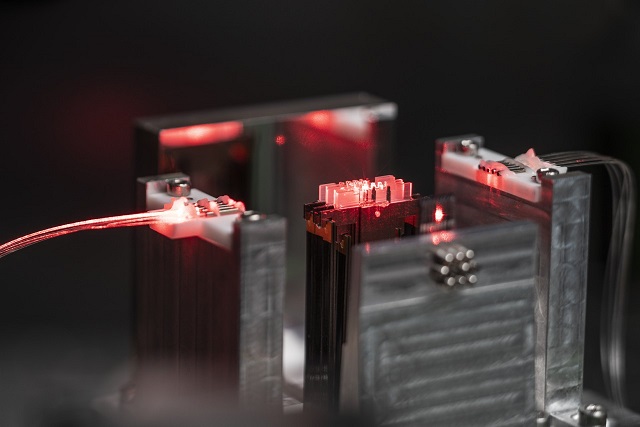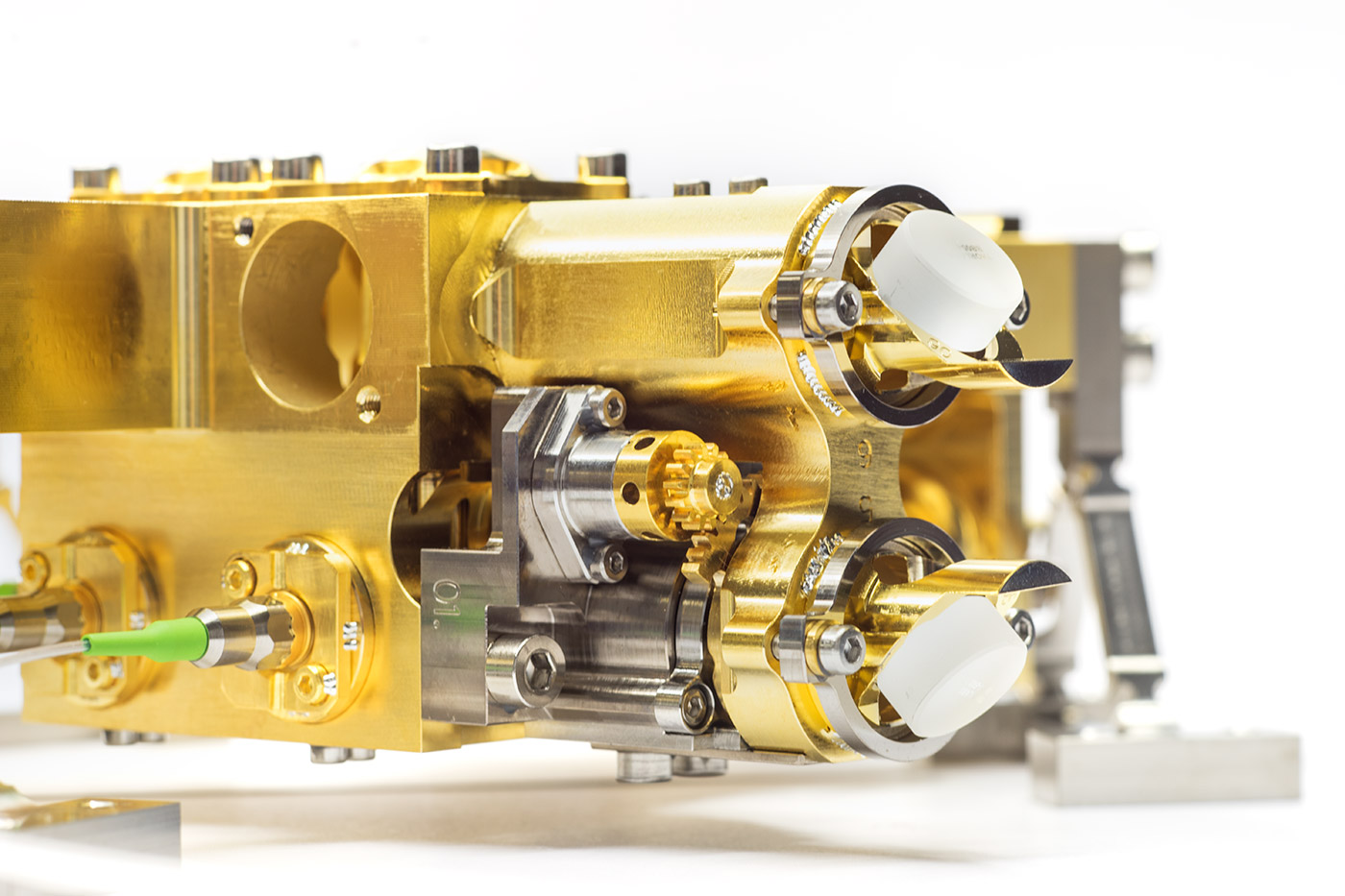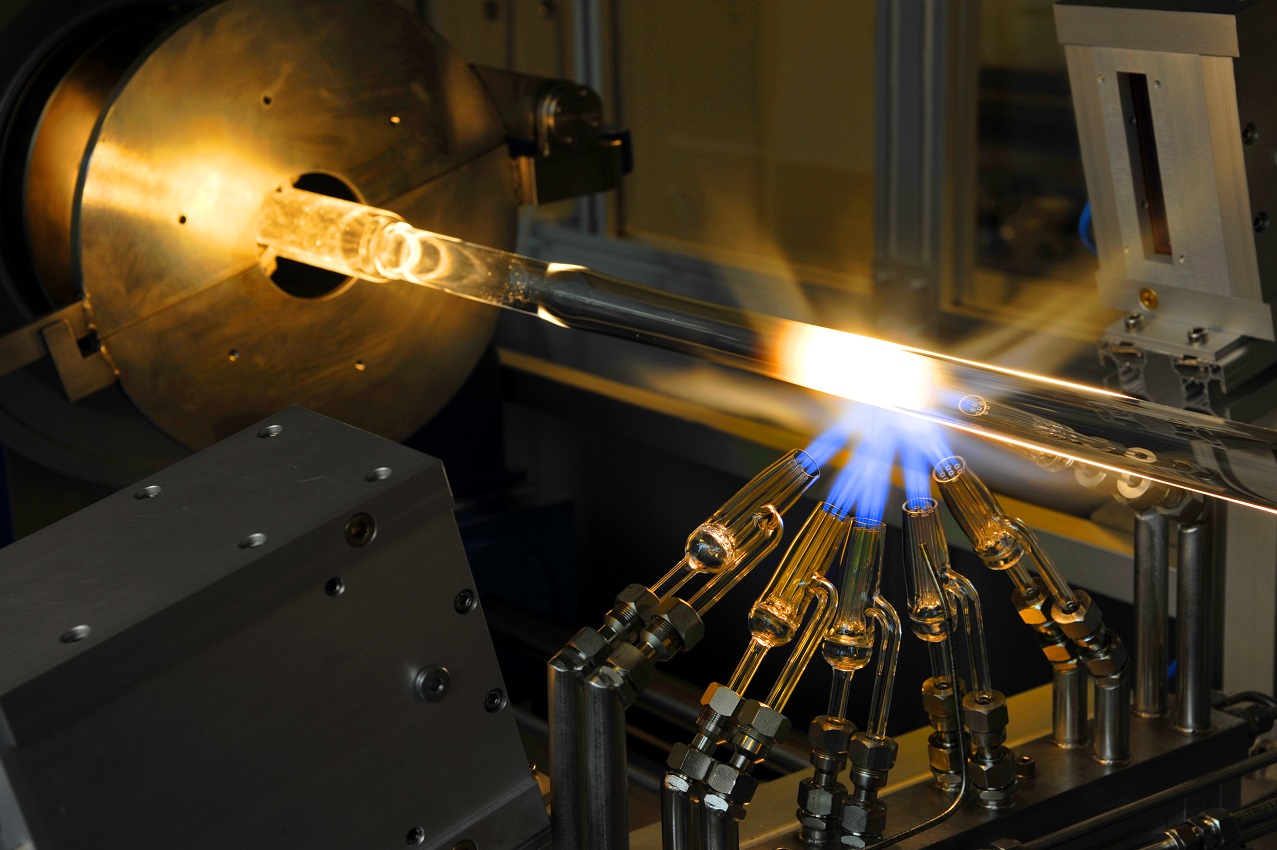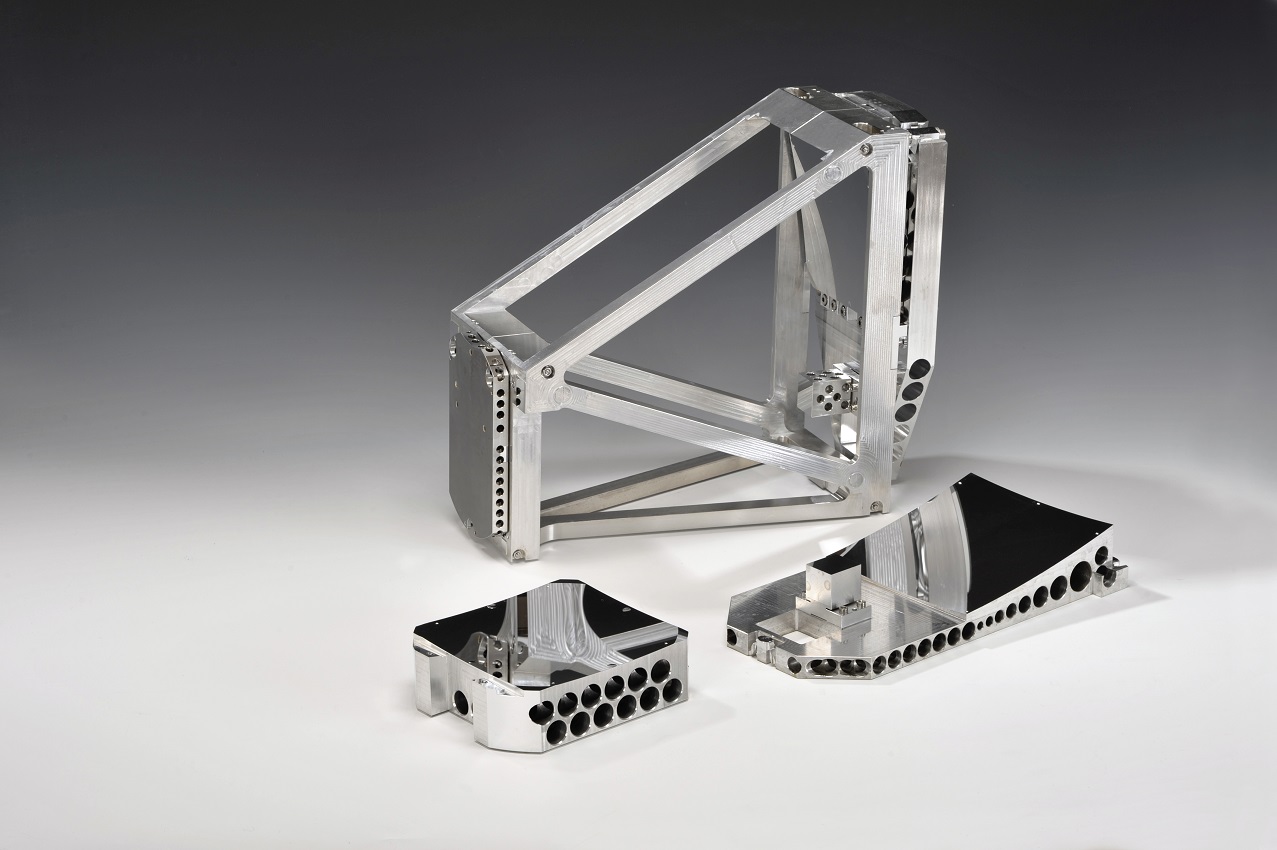SPIE Photonics West: Fraunhofer IOF presents future technologies in the fields of quantum, laser and freeform optics
Ion traps for quantum computers, highly secure quantum communication, state-of-the-art fiber lasers and freeforms for compact optical systems: At North America's largest photonics trade show, SPIE Photonics West, the Fraunhofer Institute for Applied Optics and Precision Engineering IOF will present groundbreaking future technologies from March 6 to 11. Admission is free.
When the entire optics and photonics world once again looks eagerly to San Francisco in March, there is a good reason why: North America's largest photonics trade show, SPIE Photonics West, traditionally takes place there. This year, the show will be held as an entirely virtual format. Nevertheless, more than 300 international exhibitors will present the latest state-of-the-art developments from the world of light and photonics. Fraunhofer IOF will also provide virtual insights into four of its currently largest research fields.
Ion traps for the quantum computer
The quantum computer is the breaking news. Based on the laws of quantum physics, it will start a new computer age. Fraunhofer IOF is conducting intensive research in the field of quantum computing: Researchers are currently developing a laser-optical setup that enables the manipulation of ions in an ion trap for quantum computers. Fraunhofer IOF has already provided its expertise in ion traps to the University of Innsbruck for the “AQTION” project, a part of the European Quantum Flagship initiative.
Quantum key distribution for highly secure communication
Once the quantum computer is here, it will change our lives in many ways. Especially in communication. Quantum computers can solve much more complex tasks than conventional computers. And they will be able to crack procedures that we still use to encrypt sensitive information today. New communication systems are already needed that can protect sensitive data from the technologies of the future.
At Fraunhofer IOF, research is therefore being carried out on so-called “quantum key distribution” (QKD). It allows the quantum-based encryption of our data and thus guarantees long-term security even against the background of the latest developments. An Entangled Photon Source (EPS) developed at the institute for the generation of entangled photon pairs is a possible technical basis for QKD.
Fiber lasers and preforms for highly efficient laser applications
Lasers are important information and energy carriers, wear-free tools and non-contact measuring instruments with a wide range of applications in industry and science. In the past decades, Fraunhofer IOF has repeatedly succeeded in raising the power of high-power fiber lasers to a new record level, most recently through a coherent combination of laser beams for the development of a novel 10 kW femtosecond laser system. Also, the three-stage LIDAR laser system from the “LiQuarD” project is the first powerful laser in space, which reaches a range of several kilometers depending on the degree of reflection at the target surface and is thus used to locate space debris. For many years, Fraunhofer IOF has also been developing technology for fiber preform manufacturing in order to continually shift and overcome existing limitations through innovative new fiber designs.
Due to the possibility to manufacture fibers in-house, they can be developed according to demand: ranging from kW lasers and space-qualified systems to micro- and nanostructured large-, hollow- and multicore fibers for sensor technology and communication. In this way, significant progress is being made in fiber technology. Within the framework of publicly funded collaborative projects, the fiber competence center can also be used by external partners of Fraunhofer IOF.
Freeform optics for more compact optical systems
Optical systems are often used where there is little space for large components. In the aerospace industry, for example, compact designs are essential. Freeform optics and additive manufacturing methods using selective laser melting are forward-looking solutions for this purpose. They allow complex optical systems to be made smaller, lighter and more functional. Fraunhofer IOF is unique in its closed manufacturing chain with regard to the production of ultra-precise metal optics for spectral broadband applications at component and system level in the IR-NIR-VIS-UV-EUV ranges. Applications for optical freeforms include mirror telescopes and projection systems. The DLR instrument DESIS (“Earth Sensing Imaging Spectrometer”), for example, was realized for use on the International Space Station ISS on the basis of athermal, freeform optics consisting of a three-mirror anastigmat (TMA) telescope and spectrometer.
Fraunhofer IOF also contributes its expertise to the current development of freeform optics for UV-VIS applications with a focus on high volumes and a broad range of applications such as laser material processing, machine vision and automotive sensing within the framework of the innovative regional growth core ƒo⁺ (“freeform optics plus”). The alliance develops technologies at all stages of the value chain to realize high-quality and efficiently manufacturable freeform optical systems for national and international customers.



